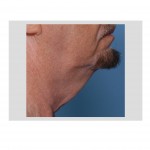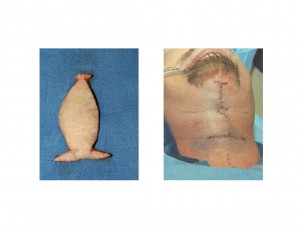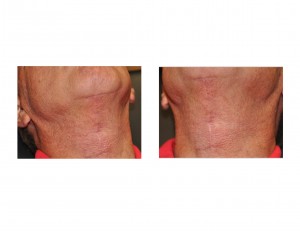
Often a surprise to many patients is that the traditional facelift is the primary surgery to improve the sagging neck. While many perceive that a facelift is a total facial rejuvenation, they erroneously believe that the neck is treated differently with a ‘necklift’. Understanding that a facelift and a necklift is the same operation is a revelation for many.
For some older patients with severe neck sagging or a ‘turkey neck’, they simply do not want to go through a facelift. In most men in particular, the facelift concept and the lack of significant hair around their ears motivates them to pursue a different option. Rather than try and persuade patients to go through a procedure they don’t really want or can’t afford, I have used in my Indianapolis plastic surgery practice an uncommon option.

But the beauty of the direct necklift is marred by one potential concern, which is why it is rarely done, that of neck scarring. That is the price that is to be paid for its simplicity and effectiveness. But how bad is this scarring? Is it slight or is it significant? Many who have never actually performed the procedure believe that the risk of poor scarring makes the direct necklift not a viable treatment option. That has not been my experience.
When speaking about necklift scarring, it is important to point out that the vast majority of patients I have treated are older men, age 65 or older. That is an important point for two reasons. The bearded skin of men allows for the most favorable s exposed scar location. Between the thickness of the skin, the healing potential of hair follicles and sweat and oil glands and the daily shaving (microdermabrasion scar treatment) that most men do, scars are set up to heal favorably. Secondly, this male population is very motivated as the other alternative (facelift) is even less appealing.


While the potential scarring is an appropriate concern in the direct necklift, careful patient selection can make for a very satisfied patient. I have yet to formally revise any neck scars but have injected several raised scars of a cm or so in the tight central neck zone.
Dr. Barry Eppley
Indianapolis, Indiana


